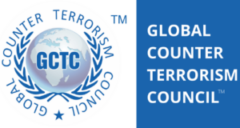Chinese aggression in Ladakh has been analysed and commented on in India as a democratic country with freedom of expression.
From this how India broadly sees the Chinese challenge can be reasonably gauged. However, China’s calculations and insights into why it has provoked this crisis remain opaque because of its closed system. In their writings, South Asia experts abroad have essentially piggy-backed on commentaries in India, without offering any insights of their own, as they too have no direct access to Chinese thinking. Speculative and misleading reasons being touted to explain China’s aggression only give advantage to its propaganda.
That through this aggression China wants to pressure India to remain “nonaligned” between it and the US is an absurd view. India’s ties with the US and China cannot be equated. Unlike China, the US is not claiming Indian territory. It is today supplying advanced defence equipment to India as a “major defence partner”.
Synergy with the US
We conduct major military exercises with the US, especially naval. We are partners in the Quad and in the Indo-Pacific. The people to people ties with the US are deep, with a 3 million diaspora in the US and well over 200,000 Indian students in US universities. The US is now our biggest economic partner, including in goods, and, what is more, unlike in China’s case, we have a trade surplus with it.
China would be foolish to think that it can place limits on India-US ties by creating border tensions intermittently as a dissuasive strategy. Actually, this belligerence builds greater public support for closer ties with the US. Besides, if China wants India to be more “non-aligned” between it and the US as its adversary, it needs to be more “non-aligned” between India and Pakistan, our implacable adversary.
To underline the absurdity of bringing in the US factor, did the Tibet issue arise between India and China because of our closeness to the US?
Beijing’s old agenda
Did the Dalai Lama flee to India for this reason? Did the Chinese occupy Aksai China to counter the US and was 1962 a part of this? Does China make offensive territorial claims on Arunachal Pradesh, and on Tawang in particular, because of our US connection? China transferred nuclear and missile technology in the 1980s to Pakistan when India was under severe non-proliferation sanctions by the US.
Did the US provoke the Doklam stand-off, and has China made the latest claim on eastern Bhutan with Tawang in mind because of the US factor?
Leftist lobbies in India use the argument of our increasing strategic closeness US to make China’s purported case, forgetting that the most intense partnership in the last couple of decades or so has been the US-China one. There may be independent, non-ideological reasons for Indian caution about over-reliance on the US.
We have to meet the land threat from China (which includes Pakistan) essentially on our own, with at best diplomatic and intelligence support from US and others, unlike in the maritime domain where US-India cooperation along with Japan and Australia can act as a deterrence against China. US policy towards Afghanistan and the Taliban, which shields Pakistan from the kind of pressure US puts on Iran, not to mention the huge economic ties that the US, Australia and Japan have with China, should be properly assessed by us to determine the scope of our future options. American analysts should not mix the logic of stronger India-US defence ties to scotch India’s so-called non-aligned inclinations, and, more importantly, reliance on Russian defence supplies.
Our longstanding defence ties with Russia cannot be jettisoned, more so in the context of Russia’s increasing strategic closeness to China pushed by US/European policies.
The US, Australia, Japan and Europe, not having territorial contiguity with China have security concerns that differ from ours. (They, unlike us, also have cold ties with Russia). Not facing a territorial threat from China, will they be ready to actively intervene in territorial issues between India and China? However, should the border situation escalate militarily, stepped up US pressure on China in the western Pacific can present China with a two-front situation, tie-down its forces in the east and force it to relieve pressure on India as a result.
The US would have an interest, even independently of India’s concerns, to expose this Chinese vulnerability and contain its muscle-flexing, which is becoming an international problem. India can, on its part, strengthen the Quad, give it a military dimension by including Australia in the Malabar Exercise.
Take ASEAN along
India should convince ASEAN that Quad and the Indo-Pacific concept are the second line of defence against China’s mounting threat in the South China Sea and that it supplements, not dilutes, ASEAN’s critical role in evolving Asian security architecture. Such an architecture will either not emerge because of China’s unbridled conduct or it will be China-centric. As long as China resorts to bullying individual ASEAN countries, fractures ASEAN unity does not disown the nine-dash line and believes that its economic and financial clout limits the scope of retaliation by others, China will pursue its hegemonic policies in Asia.




